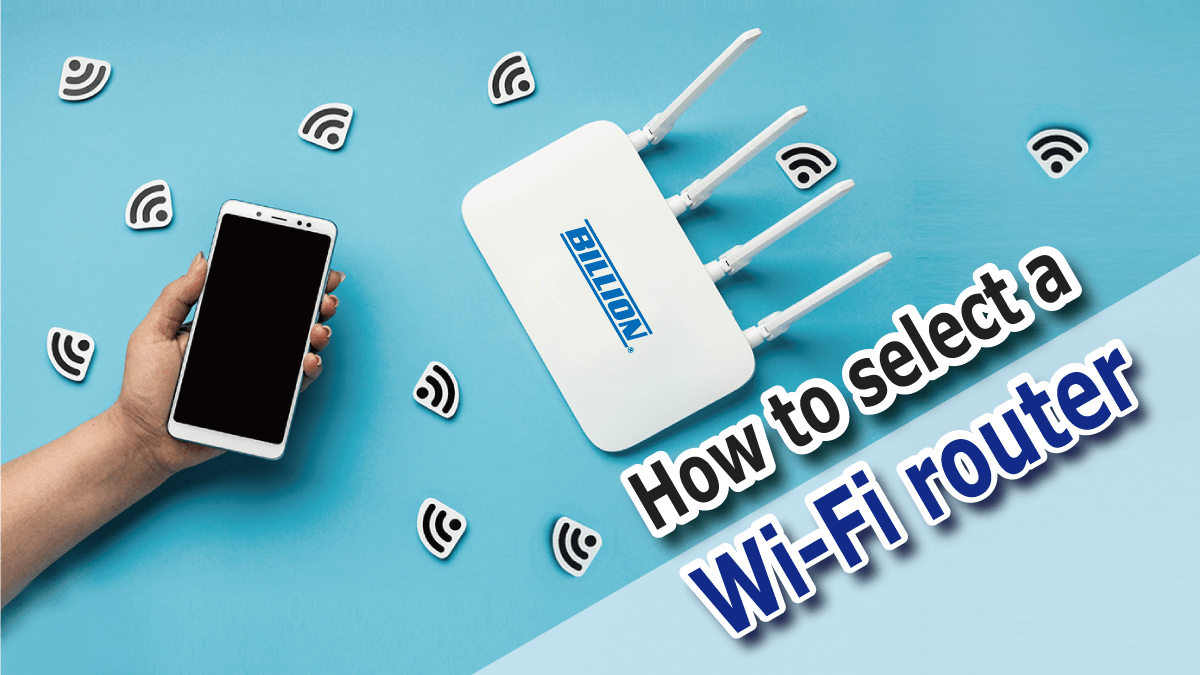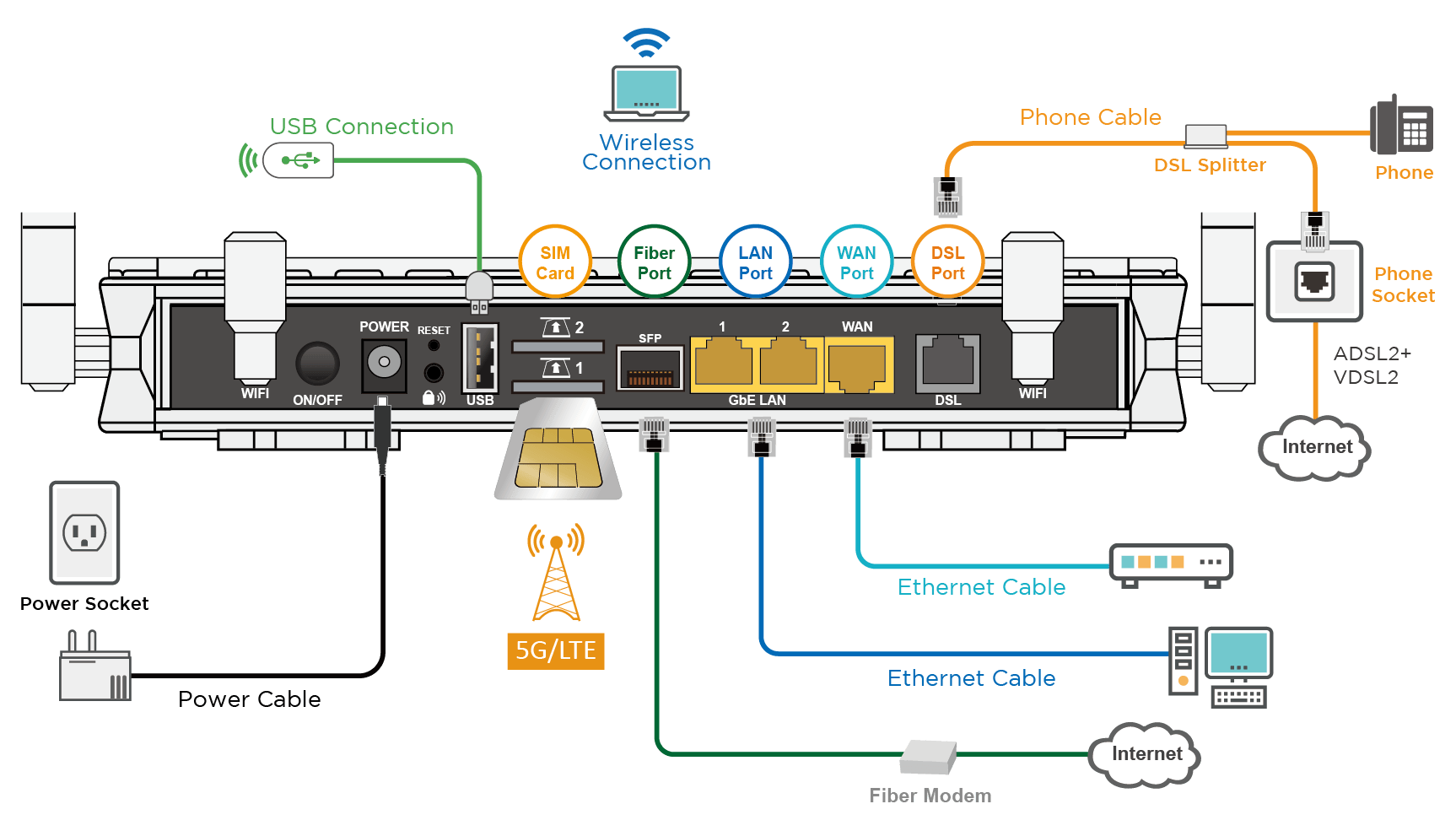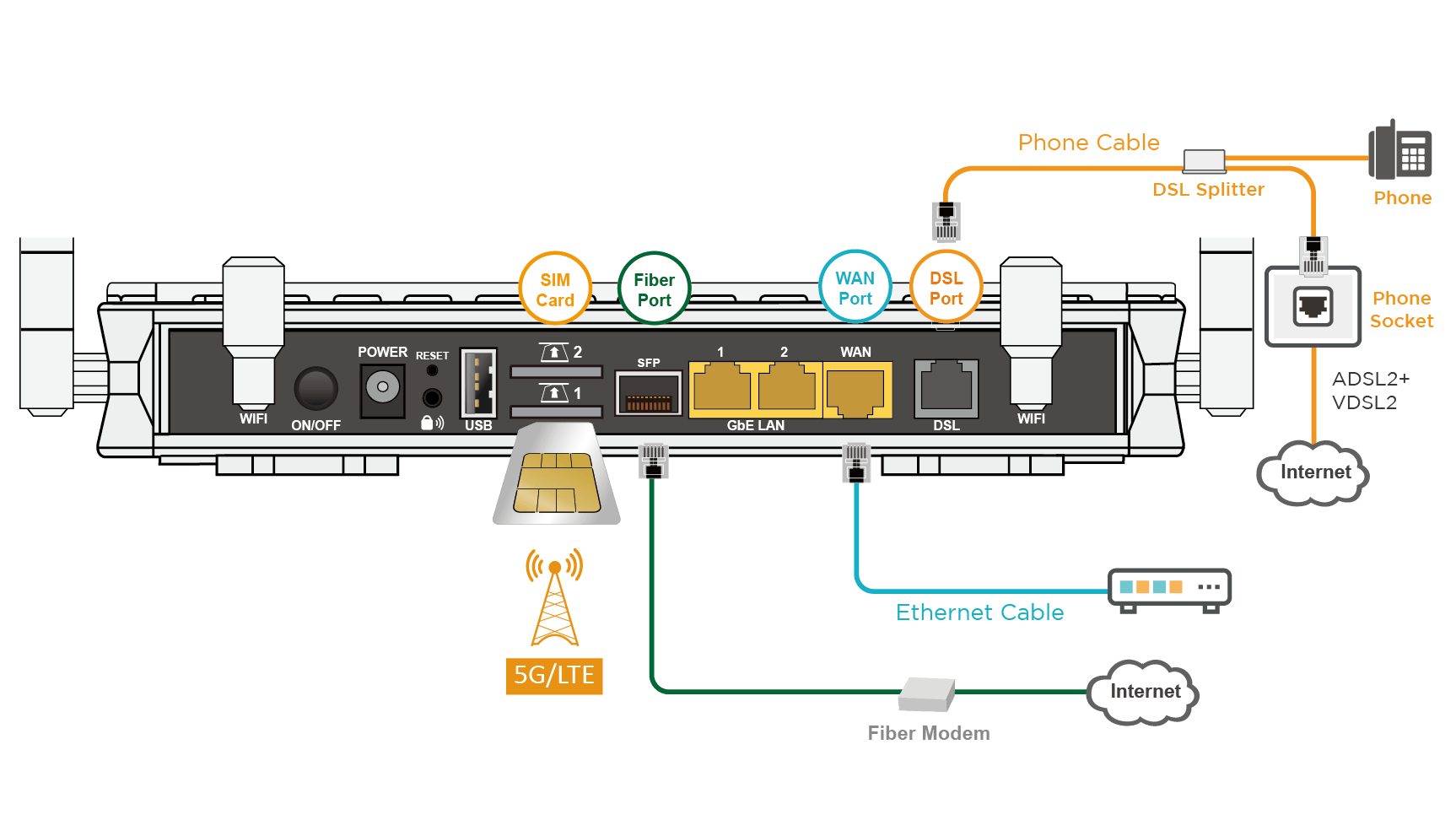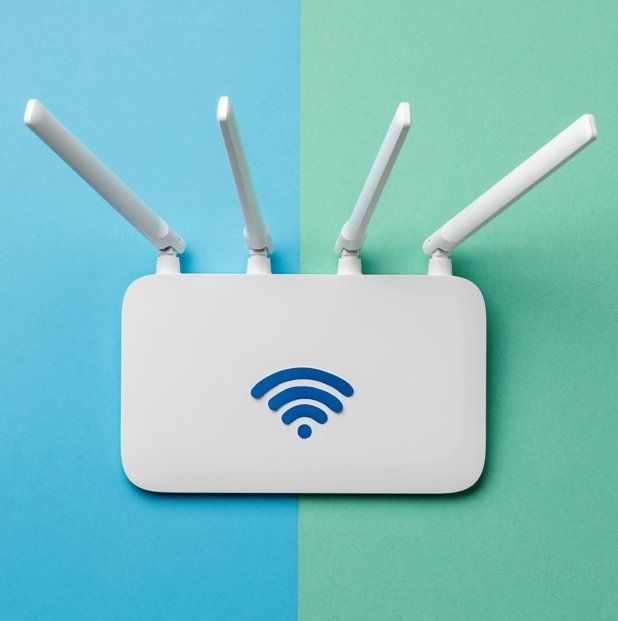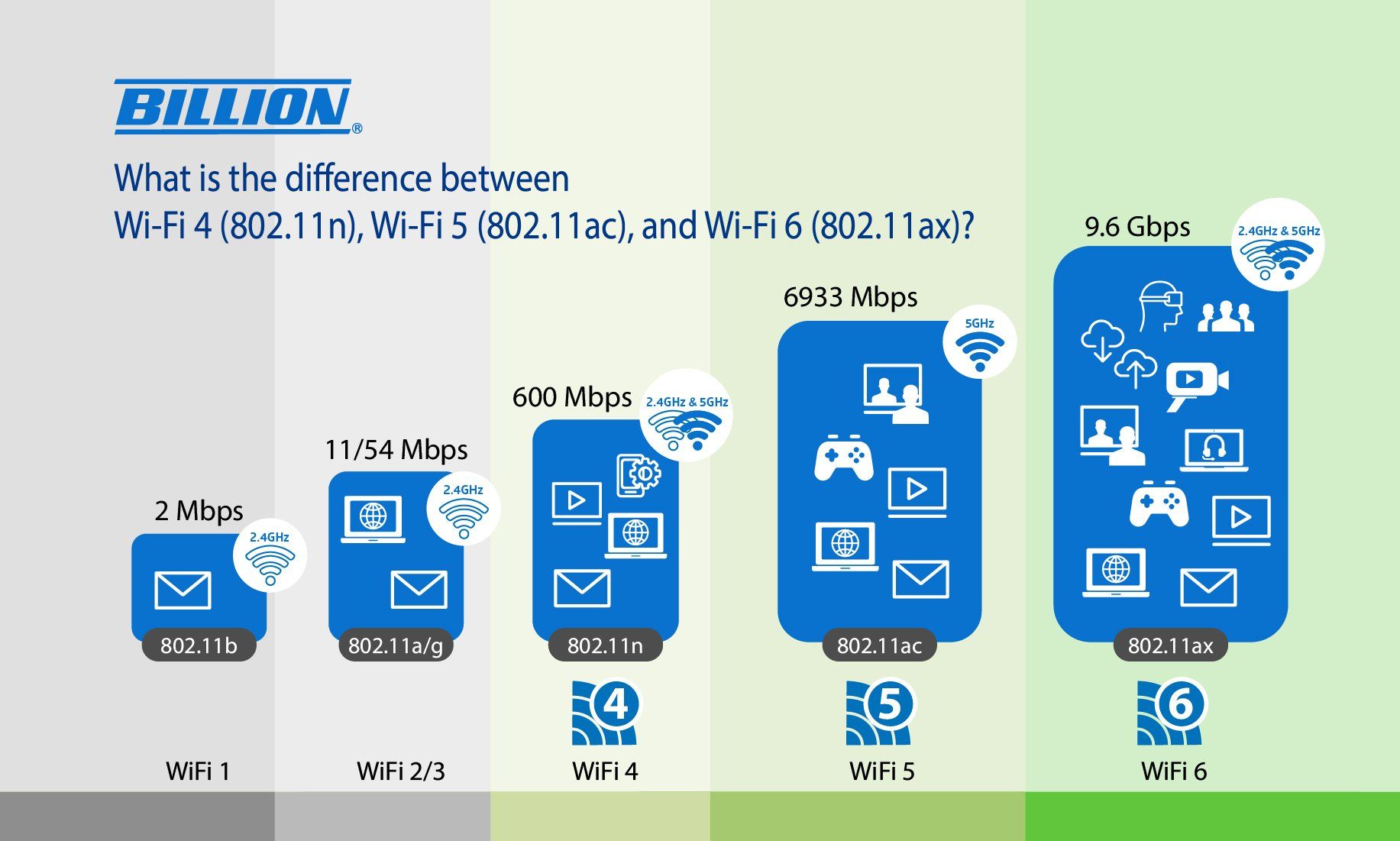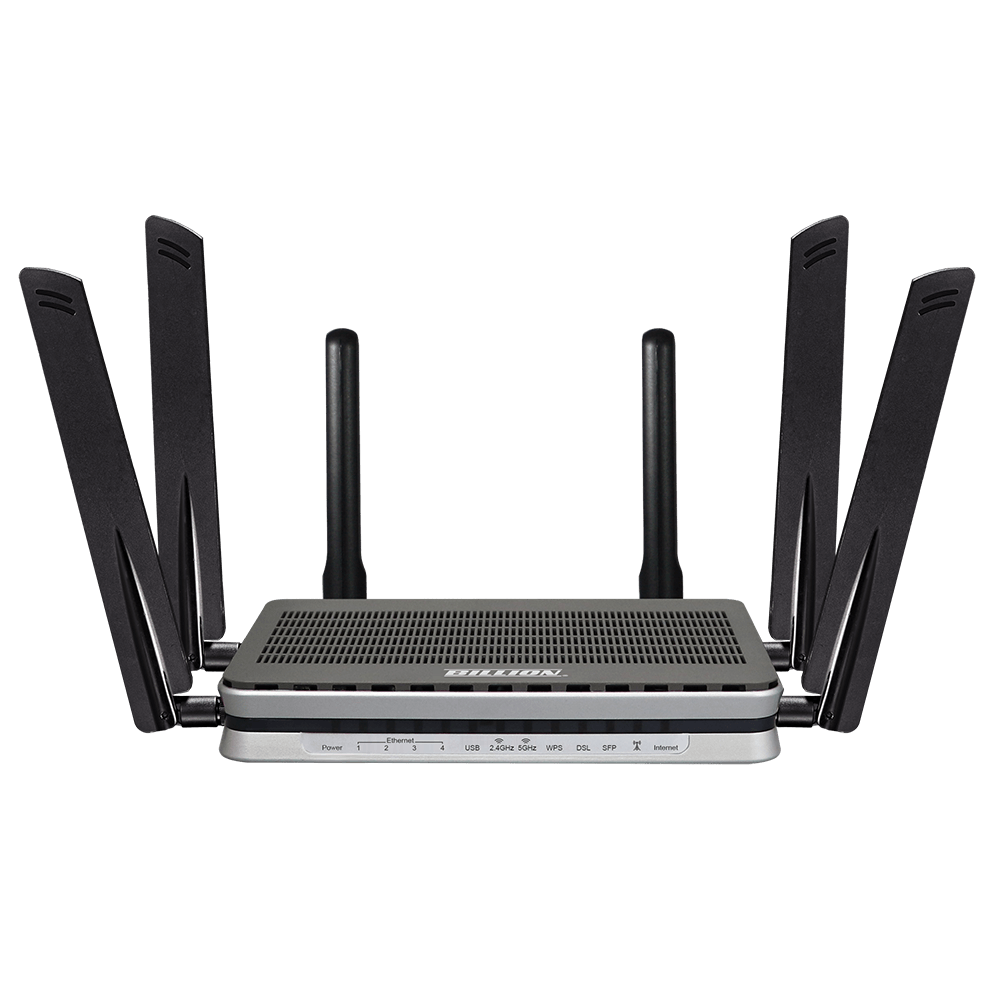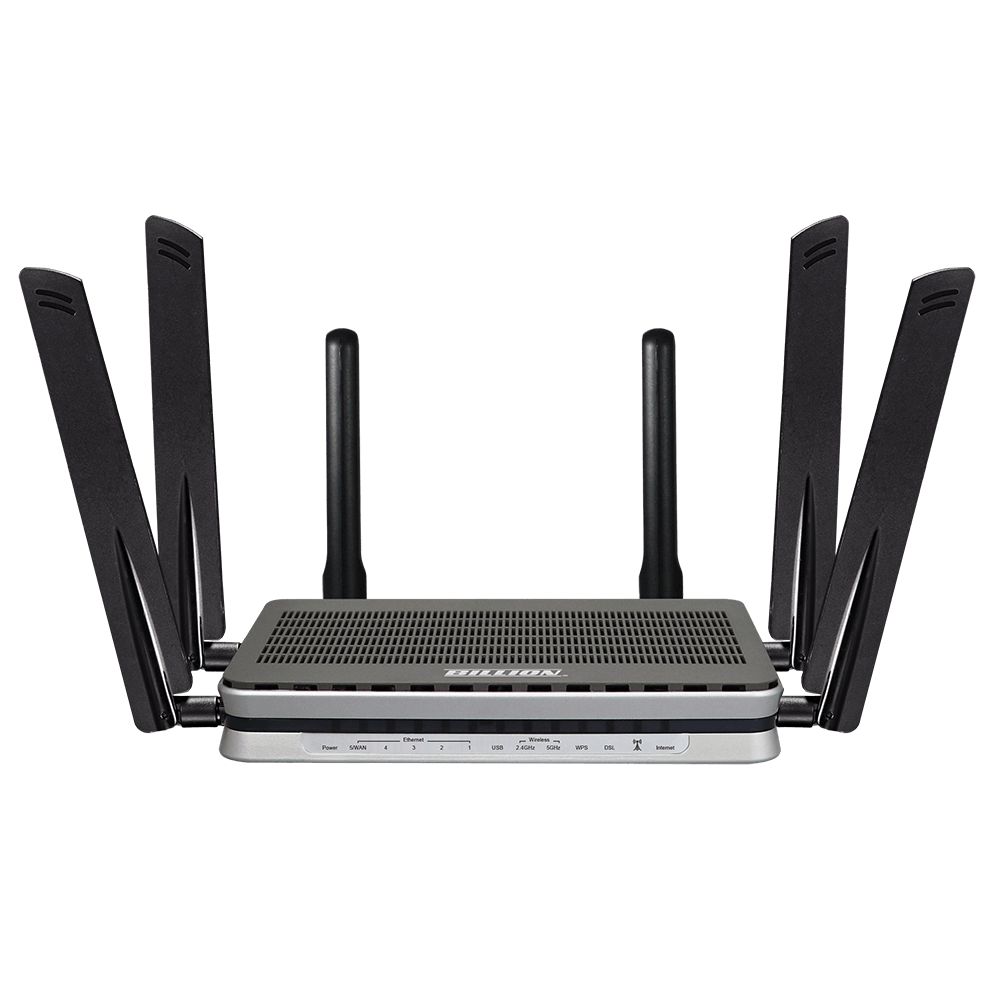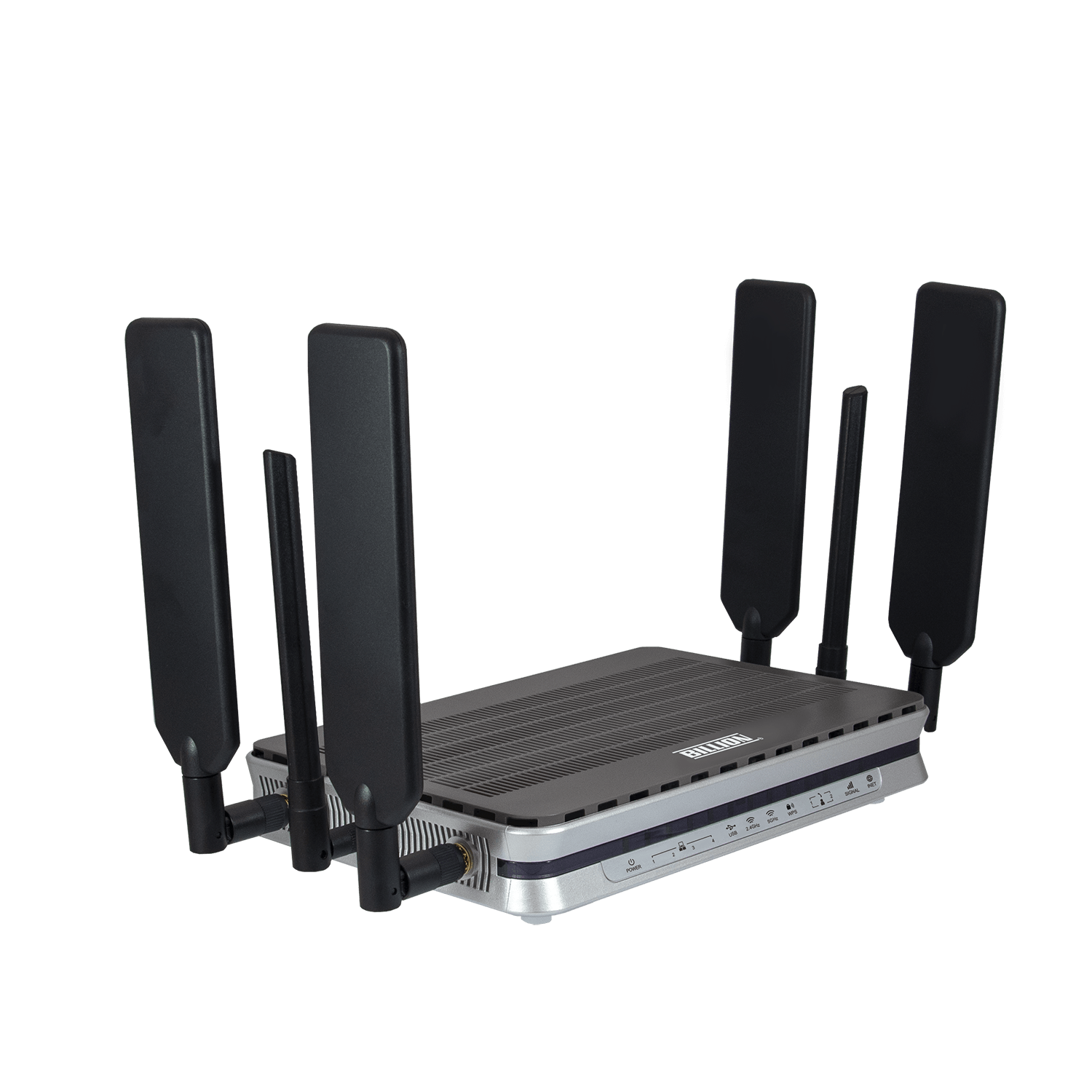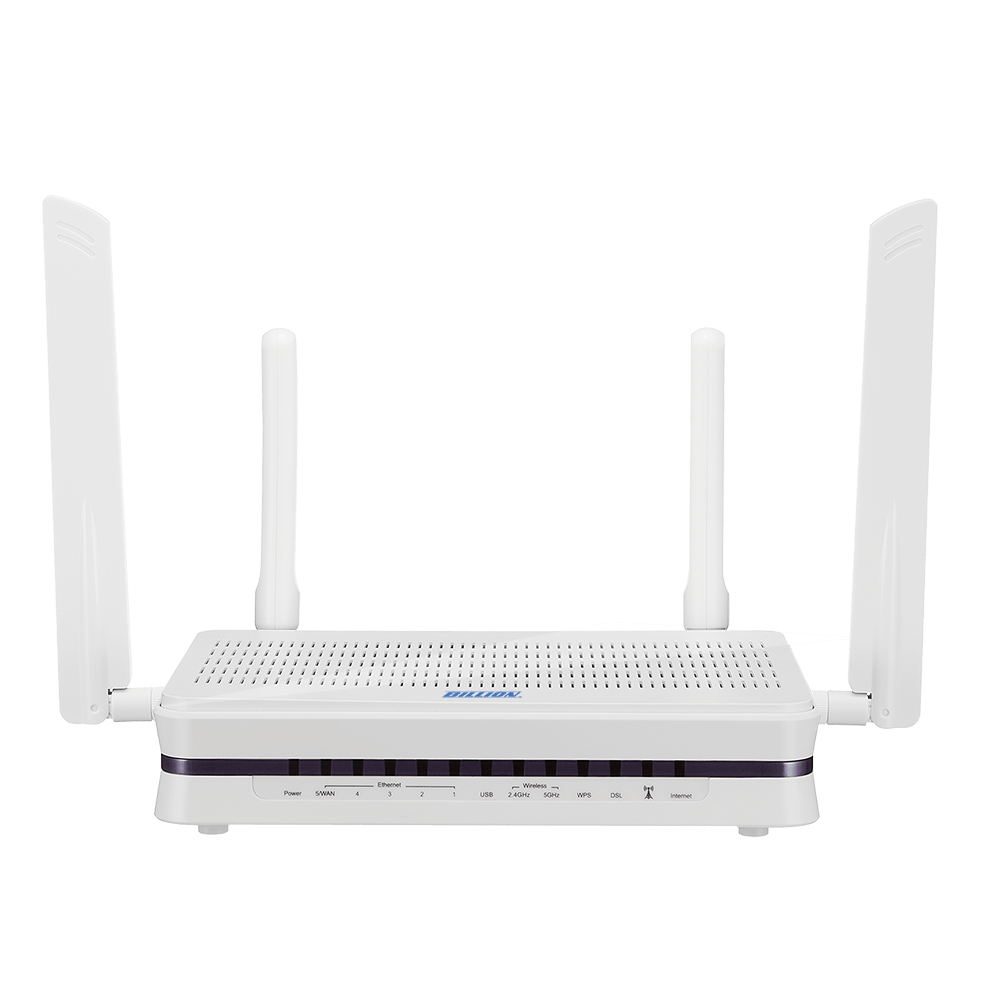Functions of a Wi-Fi router
External network (WAN), Internal IP sharing (LAN), Provision of network(Wi-Fi)
In a modern office or home, we are used to connecting various devices like laptops, smartphones, and smart appliances to the internet through Wi-Fi. The most common method used is a Wi-Fi router which converts the fixed-line signal into one that can be broadcast by a wireless network.
Key points when selecting a Wi-Fi router:
“stability”“transmission speed” “signal coverage”information security”
In this article, we will provide several suggestions on how to select a Wi-Fi router.
Firstly, select a device that meets your demand as well as provides the corresponding port types, like Ethernet ports for connection to a modem and other devices, an RJ11 xDSL port for xDSL connection to the fixed-line, RJ45 ports for Ethernet, and an RJ11 FXS port for the built-in VoIP.
Common Ethernet ports
WAN port : connected to a modem
LAN port : connection to a local network
The indicator LED lights on a Wi-Fi router to allow the user to check the connection status of devices. The power LED, usually indicating the system status, turns red when the system fails for any reason. LAN1~LAN4 monitors the status of Ethernet LAN and Wireless LAN (WLAN). Refer to your Router Manual for more details.
【External network WAN|Broadband network】
◆ Check the current network rate plan with your carrier
◆ Check the type of internet connection (Ethernet WAN, 5G/LTE, xDSL, or Fiber)
When connecting to an external network, you can use either Ethernet WAN or xDSL and the speed is based on the current network rate plan. In addition, the router should be equipped with a WAN port that matches the
download/upload bandwidth to get the optimal internet speed.
For example, if the carrier provides a fiber internet of
100M (download)/40M (upload), then you should use a router with a Gigabit WAN port.
【Internal network LAN|Local area network】
◆ Confirm your wireless router specifications
There are two interfaces for LAN: Ethernet and Wi-Fi. The speed depends upon the Wi-Fi router used.
- Wired speed (RJ45): 10/100/1000(Gigabits)
- Wireless speed (Wi-Fi): WiFi4,WiFi5,WiFi6
Selecting an Ethernet cable
UTP = Unshielded Twisted Pair
STP = Shielded Twisted Pair
FTP = Foiled Twisted Pair
【Wi-Fi】
◆ 802.11n (Wi-Fi 4) / 802.11ac (Wi-Fi 5) / 802.11ax (Wi-Fi 6)
◆ 802.11ax 1500 =300Mbps (2.4GHz) +1200Mbps(5GHz)
Single-band /Dual-band /Tri-band
Secure Wi-Fi communications
As wireless signals have few barriers and are transmitted through the air, it is easy to find your neighbor’s hotspot. In the same way, your neighbor can find yours, even on a smartphone. Walls have ears and eyes nowadays. If the transmitted data is not encrypted it is a simple matter for those with bad intentions to get what they want. So, the first thing to do after unboxing and powering up your new Wi-Fi router is to set a password.
WPA (Wi-Fi Protected Access) significantly improved the specification of connection authentication, data encryption, the prevention of data tampering, and the maintenance of data integrity. Later, with the evolvement of data security, Wi-Fi Alliance announced WPA2 and WPA3 standards and continuously enhances the specification of authentication, encryption, and the prevention of data tampering.
Branded routers on the market, which have been developed according to the accepted standards and manufacturers’ expertise will usually have good performance and be trustworthy and reliable. Consumers can evaluate their demands using the suggestions given here to find the most suitable product. Sometimes, problems encountered may not be a design issue, the product chosen may not have been one that properly addresses the demand.
As long as the products on the market are branded products designed and developed by the manufacturer's self-mastery technology, there will be a level of performance above a certain level, and the reliability of the products is also trustworthy. Users only need to grasp the above points to pay attention to, evaluate their own needs, and then learn about the evaluation of each brand's products from various forums, and then choose their favorite brands and favorite styles according to the demand standards, and they should be able to choose. The best wireless router for you. Sometimes the problem is not necessarily a product problem, but that we have not picked a product that suits our needs.
4G LTE SIM card Wi-Fi AP Routers
-
BiPAC 8208AZ
5G/LTE V/ADSL+2 P2P
Wi-Fi6 AX1500
VPN Firewall Router
-
BiPAC 8207VAZ
5G/LTE V/ADSL+2
Wi-Fi6 AX1500
VoIP VPN Firewall Router
View more
BiPAC 5500A
5G/LTE Dual-Babd
Wi-Fi5 AC2400
VPN Firewall Router
BiPAC 4520VAOZ
LTE Dual-SIM
Wi-Fi5 AC2400
VoIP VPN Firewall Router
BiPAC 8206AZ
LTE V/ADSL+2
Wi-Fi5 AC1200
VPN Firewall Router




